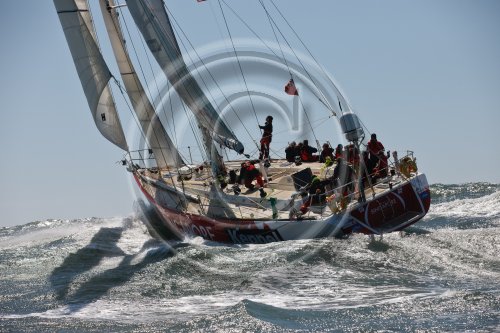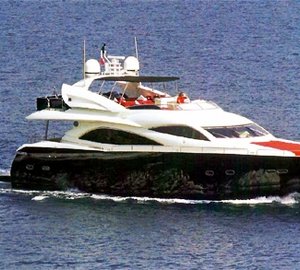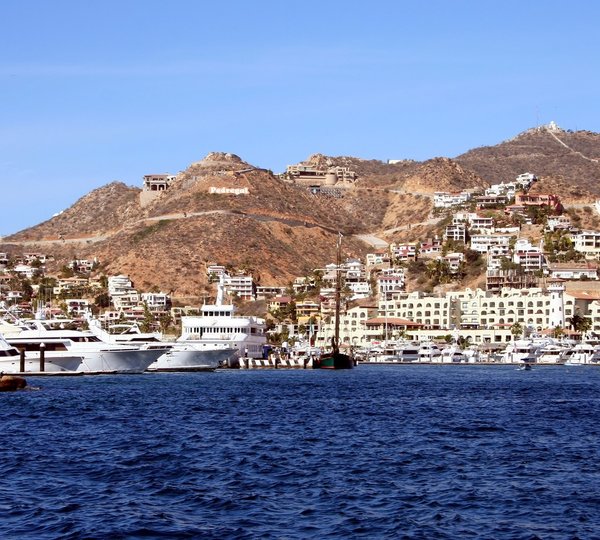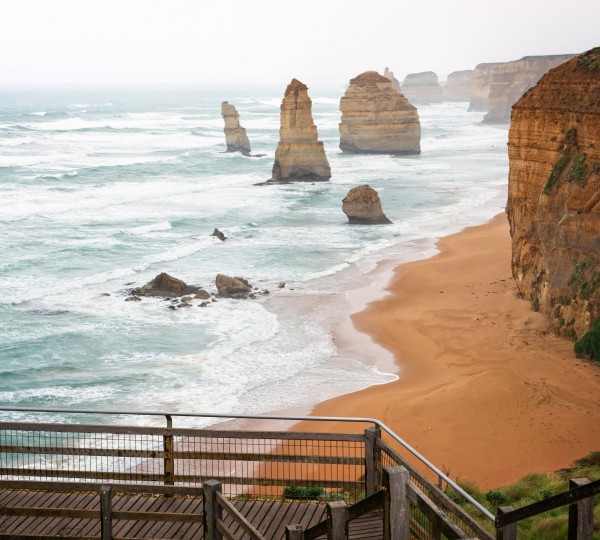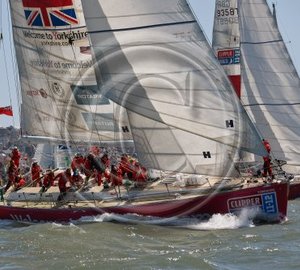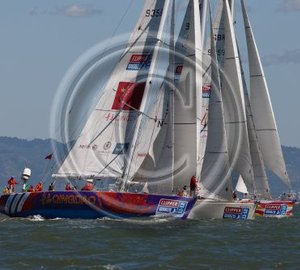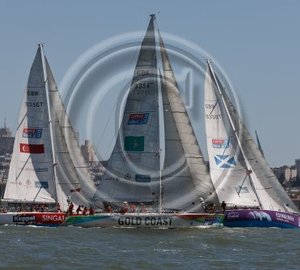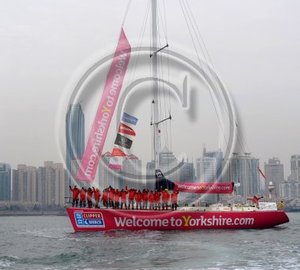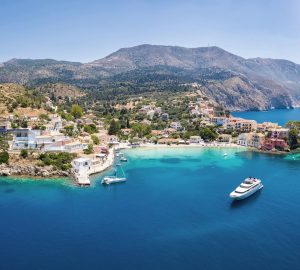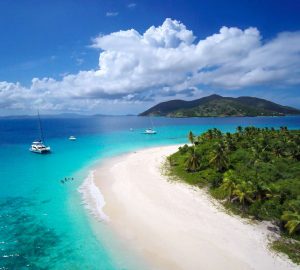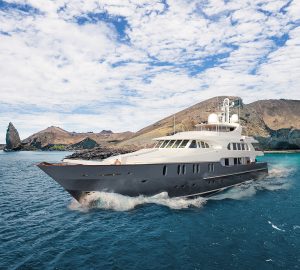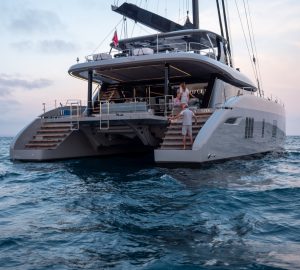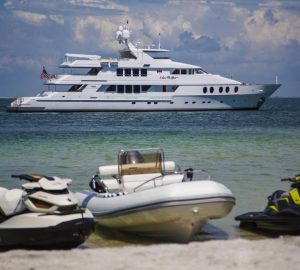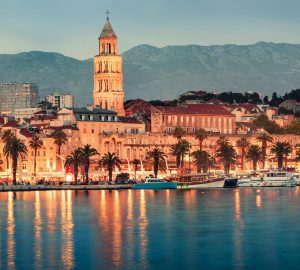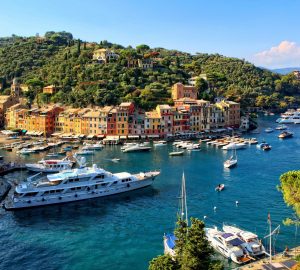Reaching the Scoring Gate, the Clipper 11-12 Race yachts are tightly packed, promising some exciting competing. The more westerly yachts are closest to the western end of the gate with less than 100 miles to pass and, assuming the wind holds up, should be able to achieve it within the next 24 hours.
However it is not a compulsory mark of the course and some teams may decide to forego the temptation of the additional points on offer in favour of staying in the narrow corridor of wind to speed them on their way to greater riches at the finish line.
For two of the teams, devastating spinnaker wraps have blighted their race in the last 24 hours.
Flavio Zamboni, skipper of Edinburgh Inspiring Capital, describes how he and his team dealt with the situation on board.
“Yesterday evening, just after sunset, we had another wrap in the medium weight spinnaker which required all night to get sorted.
“The first attempt at sorting it out was, as usual, sailing the boat on the opposite gybe to reverse the air circulation behind the main. We hadn’t realised, though, that the spinnaker was not just wrapped around itself and both stays but it was, in fact, snugged underneath the point where the inner forestay attaches to the mast. That was preventing the spinnaker itself from moving freely and getting unwrapped.
“Unfortunately, while sailing on the opposite gybe we crashed gybed twice and on one occasion the central winch in the snake pit must have got caught by the vang, resulting in the drum being ripped off its base.
“The second attempt was going up the rig to release the head and on the outboard end of the pole to release the tack, hoping that that would allow the kite to spin more freely.
“That was not the case so the third attempt was to go back up to untwist it manually, turn by turn. I was up the rig for hours wrestling the bloody thing trying to get it undone. For the best part of that time it looked like I was winning until I got to a point where the kite was so tightly wrapped I really wasn’t sure I was doing the right thing to get it undone.
“I got to the stage I couldn’t think straight any more, was drenched in sweat and getting cold and was starting to suffer from cramps, too. So I asked the guys to take me down to have a bit of a break and plan the next move.
“I thought that, because of the way the kite was hanging from the forestay, securing a line to its head to retrieve it and one loose and working the twists from the bottom could possibly work. When the on watch crew sent me up the mast for the third time at first light I was not looking forward to it, I must confess. Good news was about to come, though. In fact, as I reached the top of the wrap and started hauling in the head to secure it to a line fed from the deck the whole thing just fell off along the forestay! As soon as that happened the guys were all over it, steering the boat to avoid running it over and retrieving it from the water, virtually undamaged!
“When they lowered me down on deck it was all happening to get the boat fully powered up again and start chasing the rest of the fleet. Last night’s crew effort and attitude was outstanding and, after recovering from such a difficult situation, morale on board is higher than ever.”
Singapore’s crew can take heart from Edinburgh Inspiring Capital’s recovery… they too are battling their own spinnaker demons.
“As I type we currently have two crew members up the rig trying to sort out a monster kite wrap,” Ben Bowley tells the Race Office this morning. “I can’t begin to explain my frustration at what is costing us nearly three miles per hour on our competitors. The wrap has been in for at least an hour now and at the rate things are going we shall be lucky to have the kite down by dawn. Our dream sail has turned into a messy nightmare of twisted sails, halyards and rigging. I can’t type for long as my first priority is to get this sail sorted before it causes yet more damage. Wish us luck.”
So far the team has not suffered too badly, still in fifth place, but they will need to ensure the situation is remedied quickly to avoid further losses.
In addition to the spinnaker wraps, today has seen something of a shake up in fleet positions. As they approach the dog leg in the course the distances to finish (DTF) are calculated via a waypoint off Cabo Frio at the southern end of the Baja California peninsula to avoid DTF being calculated in a straight line across land.
“Two yachts in particular have shown bold moves,” notes Welcome to Yorkshire’s skipper, Rupert Dean. “In contrast to the majority of the fleet on port gybe, De Lage Landen has run for some time on starboard, transforming her position as most easterly boat in the fleet to being central and west of us. Sailing the other direction is Gold Coast Australia which has hardened up on port and headed radically inshore to occupy De Lage Landen’s former outpost. It’s anyone’s guess as to what is going on in Richard Hewson’s canny mind at present. Perhaps he intends to play the land sea breezes closer inshore. As with all of us, he will be weighing up the risks of positioning for points at the short term Scoring Gate, against those from the longer term race result.
“As the yachts jostle for position in the approaches to the Scoring Gate, playing their ‘chess moves’ one by one, the fleet is starting to compress, which will make for very exciting racing indeed. Certainly on Welcome to Yorkshire the sense of urgency is palpable and the crew have been trimming like mad to get every available fraction of a knot out of the light winds around us. Isn’t that what’s racing all about?”
Richard sheds some light on his team’s decision to head inshore, although is keeping quiet about whether they will make an assault on the Scoring Gate or bypass it altogether.
He says, “Gold Coast Australia began the day with good wind from the north west that gradually eased throughout the day. The tactical decision was made to head closer into the coast in search of wind and as we sailed higher angles to the rest of the fleet we were making good speed to the east.
“We passed 13nm astern of De Lage Landen around midday and continued to the east while De Lage Landen sailed to the south towards the Scoring Gate. While the wind has not backed as I was hoping it would, we now have good winds to take us down the coast and hopefully the fruits of our tactics will ripen over the next few days.”
“The fleet is still very tight and nearly everybody in VHF range. This is possibly the closest race of the series so far and everybody is sailing extremely well in the beautiful sailing conditions,” he adds.
Geraldton Western Australia has now assumed the lead, just a mile ahead of De Lage Landen, their focus on keeping the boat moving as fast as possible paying off as they make their run for the gate.
“The same patterns have been appearing over and over again,” says Juan Coetzer. “However the wind is going to die off eventually. Another day, another kite peel and a gybe. The crew are getting to grips with these complex evolutions, and doing them well. We have made up some good ground by sticking away from the island. At the moment it seems to be a big sprint for the Scoring Gate and the boat that keeps moving will be the one to reap the rewards.”
Stuart Jackson explains how the De Lage Landen crew have been able to maintain their position as one of the front runners in the decreasing wind.
“The race to the gate is hotting up with all the fleet closing in rapidly, so only time will tell whose tactics will pay off for the sought after points. Unfortunately this evening the breeze has died off significantly and we are having to sail angles closer to the wind to keep any reasonable boat speed. It looks like we are in for a few days of light winds now so even greater concentration is going to be needed to keep the boat moving.”
“Today has been much more productive from a sailing point of view and we have had much good use out of our lightweight spinnaker,” reports the man in charge of Visit Finland, Olly Osborne. “The breeze has been pretty consistent and everyone is working really hard to get the most out of the small amount of gradient wind.”
The Finnish team has recovered from their own spinnaker problems earlier in the race to begin moving up through the rankings again. And Qingdao has also benefitted from their westerly position in the ten-strong fleet racing towards Panama.
“Our tactic of staying offshore before gybing in seems to have started to pay dividends as we have moved back up the leader board but, with the fleet so close, it could all easily change as we see the various different plans unfold,” comments skipper, Ian Conchie. “For the moment we feel we are well placed to keep pushing on to try and achieve a good result but the wind can be a fickle master. We just sailed through a very light patch and try as we could we couldn’t match the speed that Singapore held for the same time which serves as a warning for us.
“All eyes are on the Scoring Gate now as everyone wants the extra points but has to decide if it is tactically worth it or better to focus on overall race strategy.”
That’s the thinking on board New York where skipper, Gareth Glover, admits his team is unlikely to make it to the Scoring Gate in the top three so their attention is on the bigger picture.
“We have been racing under the same kite all day with Visit Finland just a few miles away. The focus has been on helming and trimming which the crew have been at non-stop all day, trying to work fractions of a knot from New York, trying to keep Visit Finland at bay and catch up the front runners before the Scoring Gate.
“There is only 140nm to the western end of the gate from our position at this time and it looks like we will not get there in the top three from where we are so we are now looking past the gate and putting ourselves in a better place for when the wind goes lighter still.”
“There is some great racing going on out here!” according to Derry-Londonderry skipper, Mark Light. The team representing the UK City of Culture 2013 went into Stealth Mode at 1800 yesterday and will reappear on the Race Viewer at 1800 UTC today.
“The winds are very light and full concentration is required at all times,” he continues. “We are currently surrounded by Clipper 68s: De Lage Landen, Singapore, Qingdao and Welcome to Yorkshire are all visible on our AIS (Automatic Identification System) and none more than 14nm away from our position.
“We are flying our lightweight spinnaker and full main while trying every trick in the book to squeeze every ounce of speed from our boat. Tonight the winds are very fickle indeed and it is also very dark making helming even more difficult. Due to wind shifts and tactics we have already performed two spinnaker gybes in the last four hours and will probably carry out a third before daybreak.
“We are currently operating under our cloak of invisibility for 24 hours and are doing all we can to outfox the competition. It is strange to be in Stealth Mode and to see the odd flicker of tri-colour lights dotted randomly around our horizon. We should also be within reach of the Scoring Gate later today – providing what little wind we have stays with us – and it is clear that it is going to go right down to the wire!”
In long distance ocean racing, where the teams are at the mercy of Mother Nature, nothing is ever a foregone conclusion. One thing is certain, however: with 2,300 miles still to cover in the race from Oakland to Panama, it’s still all to play for.

